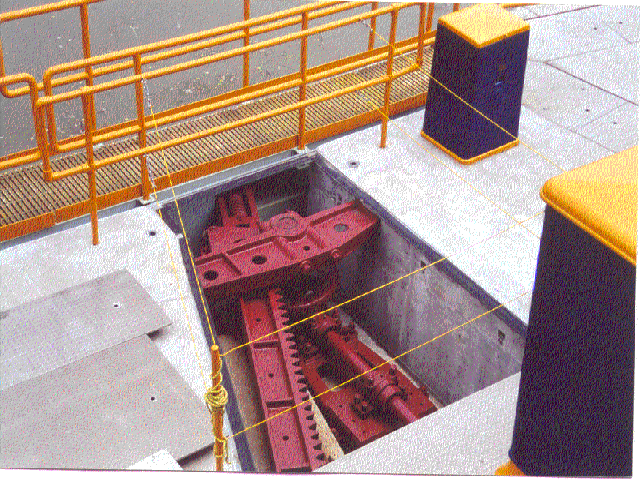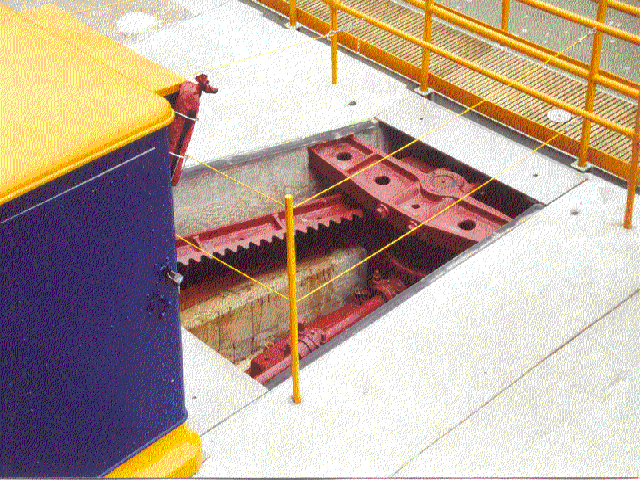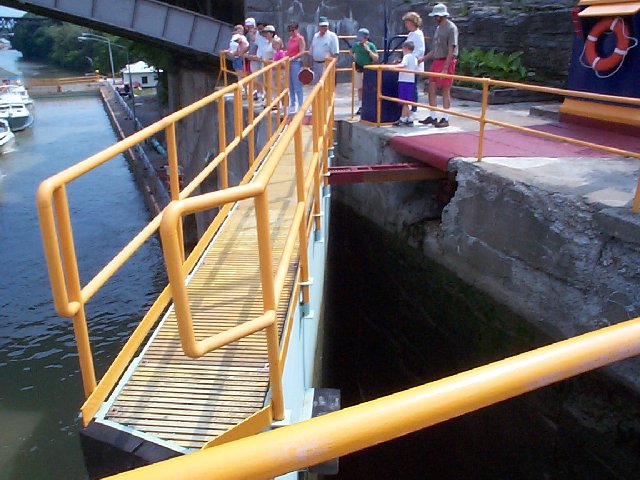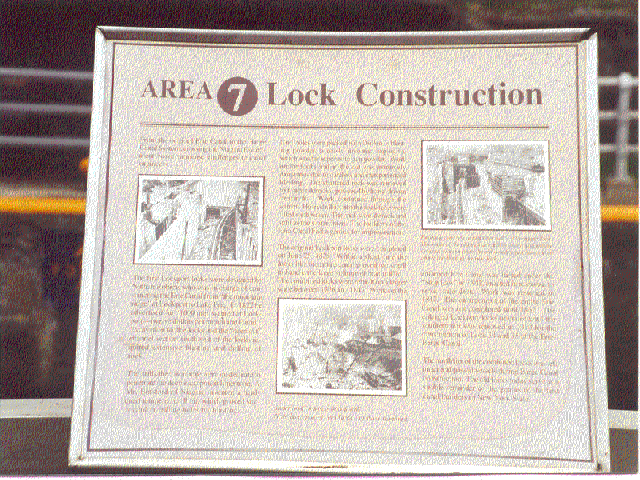

| From the orginal Erie Canal to the Barge Canal system, crossing the Niagara Escarpment posed immense challenges to canal engineers. |
| The first Lockport locks were designed by Nathan Roberts who was in charge of constructing the Erie Canal from "the mountian ridge" at Lockport to Lake Erie. In 1822 he advertised for "1000 men wanted at Lockport - twelve dollars per month and found". Excavation for the locks and the "deep cut" channel section southwest of the locks required extensive blasting and drilling of rock. |
| The drills then availble were inadequate to penetrate the deep escarpment limestone. A Mr. Botsford of Niagara invented a hardened tempered drill bit, which proved successful in drilling holes for blasting. Drill holes were packed with DuPont's blasting powder, a newly invented explosive, which was far superior to gun powder. Work on the locks and in the cut was extremely dangerious due to careless and inexperienced blasting. The shattered rock was removed by timber darricks, powered by horse driven treadmills. Work continued through the winter. Holes drilled into the rock face were filled with water. The rock would crack and split as the rock froze. The builders of the Erie Canal had a genius for improvisation. |
| The orginal Lockport locks were completed on June 25, 1825. Within a short time the locks like the entire canal proved too small to handel the large volume of boat traffic. The combined locks were rebuilt on a larger scale between 1836 amd 1847. Work on the enlarged Erie Canal was halted under the "Stop Law" of 1842, enacted in responce to sever state debt. Work was resumed in 1847. The enlargement of the entire Erie Canal was not completed until 1862. The enlarged Lockport locks operated until the southern tier was removed in 1910 for the construction of Lock 34 and 35 of the Erie Barge Canal. |
| The north tier of the combined locks was left intact and passed vessels during Barge Canal construction. The old locks today serve as a visible reminder of the gneius of the first canal builders in New York State. |
An early view looking towards Lock 34
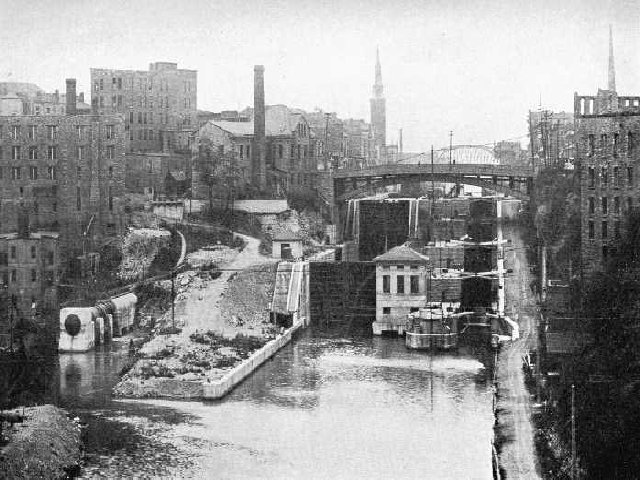
A current view looking towards Lock 34
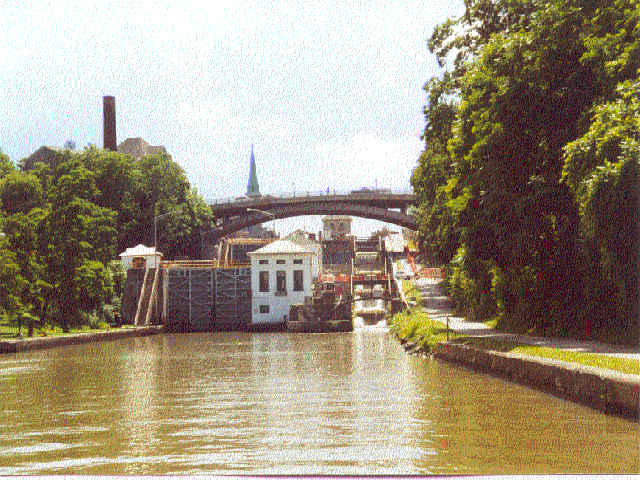
The next two views are looking into the current Lock 34
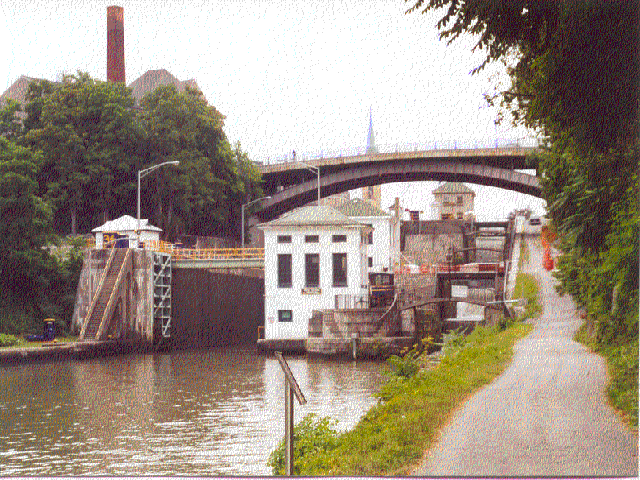
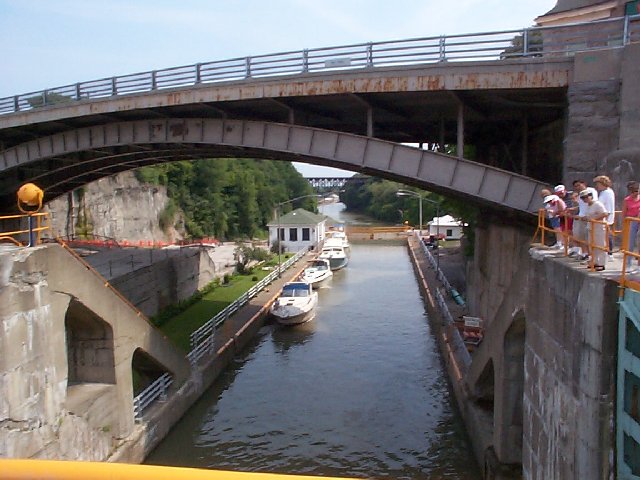
The next view is of the end of the current Lock 35 and the Big Bridge.
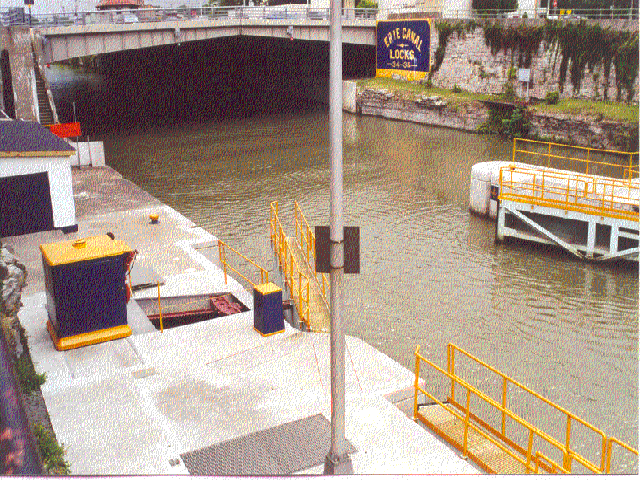
The next view is of the current Lock 35.
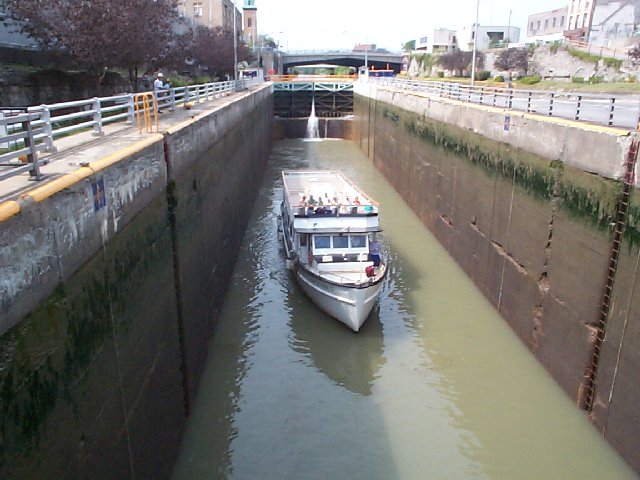
The next three pictures show the gearing mechanisms that operate the current lock doors.
